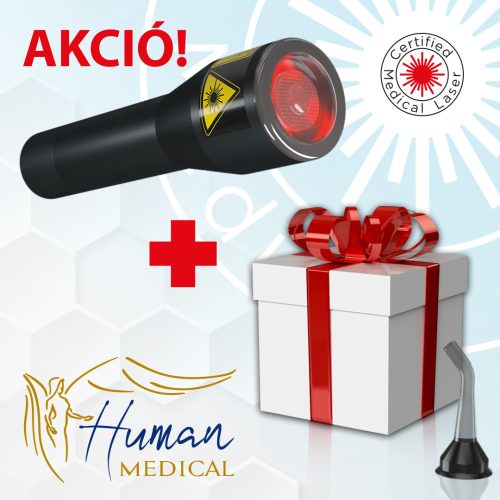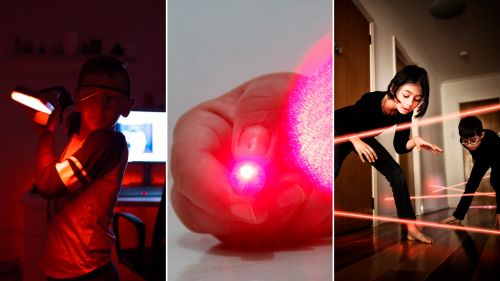Recommended News To Picking A Safe Laser Device
Recommended News To Picking A Safe Laser Device
Blog Article
What Is Safe Laser Low-Level Laser Therapy (Lllt) Help With Dental Problems?
Safe Laser low-level laser therapy (LLLT), can help with a variety of dental conditions through several mechanisms. LLLT can be used to reduce gum inflammation, which can help with dental problems such as gingivitis or periodontitis.
LLLT helps to promote tissue healing by stimulating cellular metabolism, which leads to accelerated healing and regeneration of tissues. LLLT assists in encouraging wound healing in dental procedures like oral surgery and Periodontal Therapy.
Pain Relief LLLT helps to reduce the post-operative pain, sensitivity, and discomfort.
Disinfection - LLLT's antimicrobial capabilities help to reduce the amount of bacterial burden in the mouth. It can be used together with other treatments for treating oral diseases such as oral ulcers or the periimplantitis.
Treatment of Temporomandibular-Joint (TMJ). LLT can be used to reduce tension in muscles, inflammation and jaw pain. It also assists by reducing the sound of popping and clicking as well as limited movement.
Oral Mucositis Reduced- LLLT can decrease the severity of oral mucositis. Oral Mucositis occurs as the result of radiation or chemotherapy. It is able to alleviate pain and aid in the healing of oral lesions.
The growth of healthy gum tissue The growth of healthy gum tissues LLLT has shown to stimulate gingival fibroblasts. It also encourages the growth and development of healthy gum tissue. This may aid in treatment of gingival retraction, or promote the attachment of the gingival tissues on dental implants.
Safe Laser low-level laser therapy is an efficient and non-invasive method to address a variety of dental issues. It may help speed up healing and relief from pain and also improve oral health. It is, however, essential to speak with a certified dental professional before using LLLT on dental conditions. This will ensure that you are given the correct diagnosis and recommended treatment. Check out the best lágylézer for website tips including safe laser készülék, lágy lézer kezelés, lézer bérlés, lágylézer vásárlás, lágylézer ár, laser lézer, safe laser vélemények, lézer bérlés, gyógyító lézer készülékek, mozgásszervi betegségek kezelése and more.
What Can Low-Level Laser Therapy Help With Ear Problems (Lllt?)
Secure Laser Low-Level Laser Therapy (LLLT) can aid in ear problems in several ways. LLLT may help reduce inflammation in conditions such as Otitis (inflammation of outer ear canals) and otitis (middle ear infections).
Pain Relief- LLLT modulates pain perception by affecting nerve conduction and also reducing the release of pain causing agents like substance P. For ear-related conditions such as otitis media or headaches, LLLT can help alleviate discomfort and pain. It can also provide relief to those suffering from ear discomfort.
Enhanced tissue healing- LLLT boosts cellular metabolism, which accelerates the regeneration and repair of tissues. LLLT helps promote faster healing for damaged tissues that are affected by conditions like otitis tear in the eardrum, or Otitis.
LLLT Improves Blood Circulation – LLLT increases microcirculation as well vasodilation. The result is increased blood flow to tissues of the ear. Increased blood circulation is an effective method of delivering oxygen, nutrients, and healing substances to inflamed or injured tissues.
Tinnitus Management Tinnitus Management LLLT can be used to treat tinnitus-related symptoms that manifest as ringing in ears or buzzing. Although the precise mechanisms are not fully understood, LLLT can help improve blood circulation and decrease inflammation in the auditory system and reduce hearing loss and tinnitus.
Reduced Earwax buildup LLLT could help soften and break down earwax (cerumen) buildup within the ear canal, helping in its elimination and reducing the possibility of ear blockage or infection. This is especially beneficial to those who are prone to excessive earwax production, or for those who suffer from earwax obstructure.
Safe Laser's low-level laser therapy is non-invasive, drug-free and provides relief for symptoms like pain and inflammation. It is important to consult an expert in ENT to determine the cause and recommended treatment prior to making use of LLLT. Have a look at the top safe laser 1800 for blog examples including orvosi lézer készülékek, lágylézer készülékek, mozgásszervi betegségek kezelése, lágylézer készülékek, lágylézer vásárlás, lágylézer árak, lézeres fájdalomcsillapítás, lagylezer terapia, lágylézer vásárlás, lágy lézer and more. 
How Long Is It Before A Dental Laser Is Able To Be Used To Treat Oral And Dental Issues?
The effectiveness of Safe Laser low-level laser therapy (LLLT) for treating dental and oral conditions can vary dependent on factors like the particular condition being treated, the seriousness of the problem, the individual's general oral health and their reaction to treatment. LLLT is usually suggested over a long period of time to get the best results.
The severity and type of dental problem can impact the amount of LLLT treatment sessions required. Conditions like gingivitis and periodontitis or oral ulcers as well as temporomandibular (TMJ) disorders can require different treatment strategies.
Individual Response to Treatment - Factors such as oral health, immunity function and healing capacity may influence the manner in which a patient reacts to LLLT. Certain individuals might respond more quickly to treatment and show quicker improvement in symptoms however, others might require prolonged therapy.
Treatment Protocol - The treatment plan recommended by a dentist specialist will play an important part in determining the amount and frequency of LLLT sessions for dental and oral conditions. Healthcare professionals will customize treatment plans based on the specific needs of the patient. This could include scheduling LLLT at different times throughout the day or several sessions per week.
Chronic as opposed to. Acute Conditions - The amount of LLLT sessions needed for treatment can be dependent on the distinction between chronic and acute situations. Acute conditions such as oral ulcers or post-operative pain may require fewer sessions for relief, whereas chronic conditions such as periodontitis or TMJ conditions may require more extended treatment.
Although some patients will experience improvement in their dental or oral problems after just a few LLLT treatments, others may need a more prolonged course of treatment to achieve optimal outcomes. It is essential to adhere to the prescribed treatment regimen by a dental professional and to attend all scheduled LLLT sessions to maximize the benefits of treatment for dental and oral conditions. To ensure proper treatment, communication with the dental provider is essential.